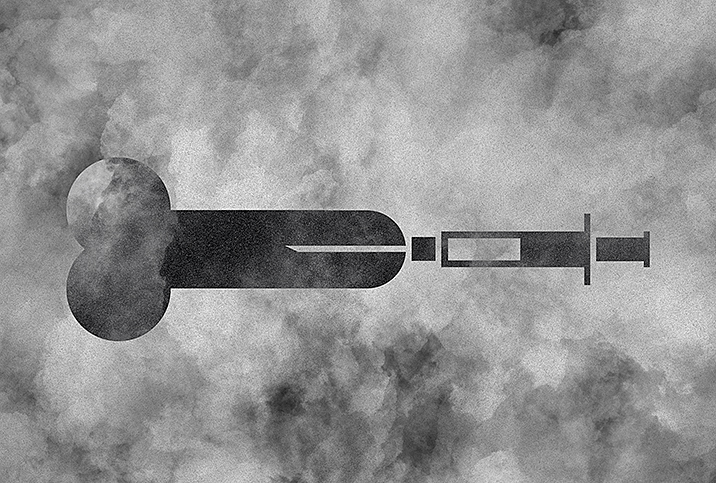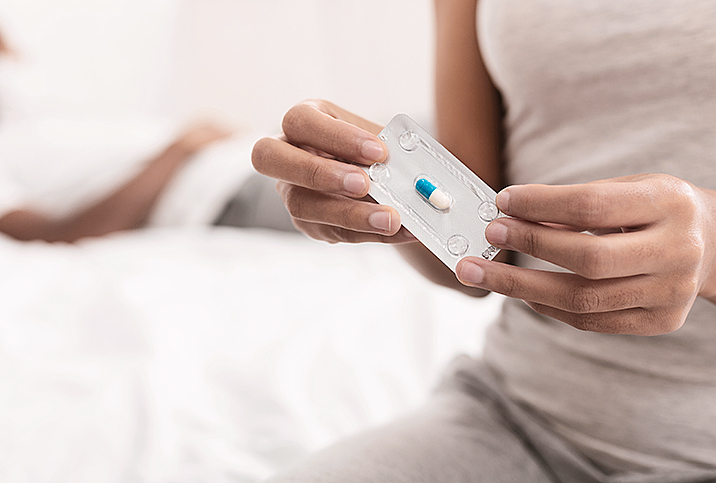Possible Causes of Enlarged Prostate Symptoms in Young Men

The prostate gland goes through two growth spurts. The first happens during early puberty, and the second begins around age 25 and continues for the rest of a man's life. So by the time most guys hit their 50s or 60s, they have some prostate enlargement.
Some younger men, however, also notice a prostate enlargement that may cause urinary issues. This type of prostate enlargement in young men is different than inflammation caused by an infection, which is called prostatitis. This generally innocuous enlargement is called benign prostatic hyperplasia (BPH).
Some men in their 20s and 30s can also experience symptoms that mimic BPH but actually stem from other conditions.
Overview of benign prostatic hyperplasia (BPH)
BPH is a medical condition in which the prostate grows larger. As the prostate grows, it tends to obstruct the flow of urine out of the bladder, said S. Adam Ramin, M.D., a urologic surgeon and the medical director of Urology Cancer Specialists in Los Angeles. However, prostate enlargement in young males does not always cause urinary problems.
Think of the prostate as a donut where the urine from the bladder goes through the prostate into the urethra and exits the body. So urine goes through the middle of that donut, explained Justin Houman, M.D., a reproductive urologist and men's health specialist at Tower Urology in Los Angeles and the medical director for Bastion Health, an app-based telehealth platform for men.
"Now, the prostate can enlarge in two ways," Houman explained. "It can enlarge the outside of the donut or the inside of the donut, or both could happen. When the inside of that donut enlarges, it decreases the stream of urine through that channel, thus, creating some of the problems associated with prostate enlargement."
Ramin listed several of the symptoms caused by obstruction:
- A slow urinary stream
- The sensation of incomplete bladder-emptying
- Having to strain during urination
- Stopping and starting of the urinary stream flow
- A delay in starting to pass urine
- A sense of increased urgency to get to the bathroom
- Increased frequency of urination
- Urinary leakage with a severe urge to get to the bathroom
- Complete closure and inability to urinate (urinary retention)
"Men with BPH may have varying degrees of one or many of these symptoms," Ramin said.
Why do some men in their 20s and 30s experience prostate enlargement?
Prostate growth is normal for all men. It happens in two phases, the first through puberty and the second during their mid- to late 20s.
"The second phase of enlargement generally starts anywhere between the age of 25 to 30, and it slowly progresses up until your 50s and 60s, where it becomes a little bit faster pace in terms of growth," Houman said.
Many men get BPH later in life. About 50 percent of men between ages 51 and 60 experience it. Up to 90 percent of men older than 80 do, too. But it's not that common for younger men to get the condition.
"In general, men who develop these symptoms in their 20s and 30s may or may not truly have BPH," Ramin said.
It has become commonplace to attribute these symptoms to BPH. However, Ramin stressed it is essential to note some other causes or conditions that lead to the symptoms associated with BPH. Distinguishing between a diagnosis of BPH and the symptoms listed above is important.
Whether it's BPH or another prostate condition causing symptoms, prostate care is important at any age. A healthy diet is the best way to accomplish prostate health, but sometimes a supplement helps, especially one that combines three prostate-friendly herbs in one capsule. Prostate Health vitamins from Giddy Health utilize a formulation of saw palmetto, stinging nettle and pygeum to manage prostate size and maintain a healthy urinary flow. Microbead technology ensures a timed release throughout the day.
Conditions that cause symptoms of BPH
According to Ramin, three conditions that most often cause the symptoms associated with BPH in younger men are an elevated bladder neck, urethral stricture and median lobe hyperplasia.
Elevated bladder neck
This condition is often commonly misdiagnosed as BPH in young men. Elevated bladder neck happens when the prostate's connection to the bladder's opening is misaligned.
"Normally, the prostate and the bladder neck opening is a straight pathway," Ramin said. "As the bladder contracts, the urine easily exits the bladder neck opening and enters the prostate fossa, the tube in the prostate that urine travels through to reach the urethra."
However, in patients with an elevated bladder neck, the prostate is located higher than the opening of the bladder neck. This creates a "roadblock" or "speed bump" that impedes the urine from exiting the bladder neck to enter the prostate fossa.
Ramin said this is a congenital problem, meaning a person is born with it. These patients have more urination frequency starting in their youth, and it usually takes them longer to empty their bladder. People often don't notice or pay attention to the problem, or a doctor tells them they have a small bladder.
By the time they reach their 20s and 30s, the condition has caused damage to the bladder muscle wall, causing increased urinary symptoms.
"At this point, they might get a second misdiagnosis of BPH," Ramin said. "The best way to diagnose the true problem is to do a cystoscopy or a pelvic ultrasound."
Urethral stricture
Another condition that may cause BPH-like symptoms in this age group is urethral stricture. Ramin described it as the urethra becoming obstructed by the development of thick scar tissue, which reduces its luminal diameter. Urethral stricture can be caused by any of the following:
- Prior urethral instrumentation
- Injury to the perineal area between the anus and genitals
- Pelvic fractures
- Sexually transmitted infections (STIs) such as gonorrhea and chlamydia
Median lobe hyperplasia
The third condition that can cause BPH-like symptoms is a special form of BPH that presents at younger ages, usually in a person's 30s and 40s. It's called median lobe hyperplasia.
"In this case, the middle part of the prostate grows like round marble," Ramin explained. "This middle portion protrudes into the bladder neck area, essentially closing off the bladder neck."
Since there is an actual overgrowth of a portion of the prostate, it can be called BPH. But Ramin said this condition does not cause a global enlargement of the entire prostate.
"Only a small amount of overgrowth at the bladder neck area will be sufficient to cause moderate to severe BPH symptoms," he said.
Can lifestyle, diet or genetics play a role in prostate enlargement in young men?
According to Houman, BPH growth is mediated by testosterone in the sense that testosterone can convert to other hormones, including estrogen, which could cause an increase in prostate size. This means men who use excess testosterone or anabolic steroids have a higher risk of experiencing BPH or BPH-like symptoms, Ramin said.
Food and beverages don't directly cause prostate growth, but some, such as sodas, caffeine, spicy foods and alcohol, can irritate the prostate and cause symptoms that mimic BPH, Houman explained.
"These kinds of things can irritate the prostate and mimic some of the symptoms," he said.
Additionally, Ramin said some lifestyle factors could lead to urethral stricture. Having sex with multiple partners without condoms increases the risk of STIs, which may lead to stricture.
"Bicycle riding many hours a day places increased pressure on the perineum and may cause strictures as well," Ramin explained.
Finally, Houman and Ramin both said men whose fathers have an enlarged prostate have a slightly higher risk of developing BPH as they get older, so there is a genetic component.
"Luckily, we have many treatment options, varying from medications to in-office procedures to hospital surgeries, to treat this," Houman said. "So if you are experiencing any of these symptoms, being evaluated is essential to ensure it's not impacting your quality of life."


















